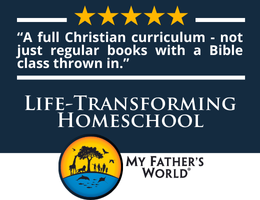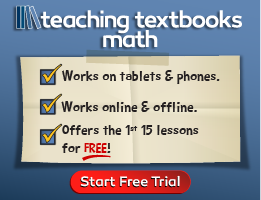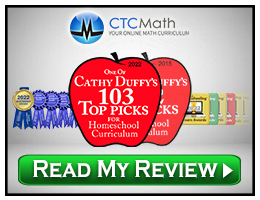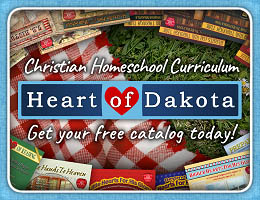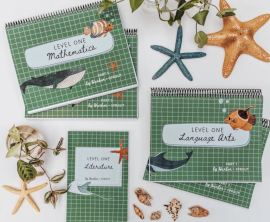Harbor & Sprout Level One for first grade provides homeschoolers with the math and language arts components for a non-sectarian curriculum. History, science, nature study, life skills, geography, art, and music can be covered with Harbor & Sprouts Patchwork unit studies or other resources.
Level One has three components: Mathematics, Language Arts, and Literature. They can be purchased individually and in either digital or print formats. Printed Mathematics and Language Arts books are laid out in a landscape orientation and have a spiral binding at the top to make it easy for children to write in them.
All resources are heavily illustrated in full color. For each of the three areas, both teacher and student material is included in a single resource. You might expect the pages to be dense with print, but, on the contrary, the lesson pages in the math and language arts course are laid out creatively in artistic boxes and set against a grid-paper style background. While the literature book has much more text, it still includes plenty of color and black-and-white illustrations.
Both Mathematics and Language Arts are hands-on courses that use lots of household and craft items such as zip-seal bags, bowls, salt or sand, index cards, a children’s dictionary, glue, dice, and vegetable seeds. See the complete list online. Literature provides multisensory learning through its extension activities.
A free, digital sample pack is available.
Mathematics
The digital file for Level One Mathematics has 591 pages. Consequently, the content is split into two coursebooks when you purchase the print version. With either format, you also receive a digital file of printable supplements for 2D and 3D shape flashcards, number flashcards, addition and subtraction fact cards, a number bond mat, a number line, a 120 chart, tangrams with puzzle cards, a ten-frame, international money templates, and manipulatives (for tens and ones). These pages should be printed on heavy cardstock and laminated. While the use of these supplements isn’t required, it should be helpful. You can also substitute other manipulatives, such as actual Base Ten blocks or wooden tangrams.
Concepts and skills taught in Level One Mathematics are reading and writing numbers to 120; counting by 2s, 5s, and 10s; place value; addition; subtraction; subitizing; fact families; story problems; graphs and data; shapes; measurement; time; money; and an introduction to fractions and decimals.
Lessons must be taught interactively and should take 15 to 25 minutes per day. Even though teacher and student material is on the same page, it’s easy to differentiate them: instructional information is in blue boxes, and learner activities are in green boxes.
The course has 180, three-page lessons, divided into eight units. The first page of each lesson lists objectives and any materials required. A brief warm-up provides a spiral-style review of previously learned concepts. Many lessons also include an AVK Connection activity that might involve audio, visual, and/or kinesthetic learning activities—these might involve outdoor activity, like finding leaves. Also on the first page is the illustrated instruction, which is to be read directly to the child. For example, Lesson 6 teaches skip counting by 2s using a number line. The parent reads the instructions and then has the child trace a dotted line with their finger to show a bunny hopping over every two numbers. Children will often write directly on the lesson page, sometimes for the instructional part, and almost always for the warm-up. Two pages of reinforcement exercises follow the first page for each lesson. Occasionally, lessons have pages to be cut out and used as a learning activity. For example, pages 210, 211, and 213 have a cloud and six strips of colored paper for children to cut out. Students are to cut the strips to specified lengths (measurement skills) and glue them to the cloud in rainbow order.
Skill checks at the end of each unit let parents know if students have failed to master a concept. If that’s the case, the instructions suggest revisiting the AVK Connections (on the first page of each lesson) or the list of Extension Ideas. The 11 pages of Extension Ideas in the front matter are listed under skill/concept headings, making it easy to identify those most helpful. Periodic mastery assessments and a final comprehensive mastery assessment also help parents evaluate student learning. Both skill checks and mastery assessments are presented in the same colorful, illustrated format as lesson exercises, so they don’t look any more intimidating than the lessons. This reflects the curriculum authors’ intent that they be viewed as tools to identify what a child knows or still needs to learn rather than as tests.
In addition, three pages of teaching tips in the front matter suggest even more learning activities and strategies, such as playing games, cooking and baking, reading from the list of recommended children’s books, and singing math songs.
Language Arts
Level One Language Arts is laid out just like Level One Mathematics, although it has 617 pages and is divided into 12 units. It covers phonics, reading skills, spelling, composition, and beginning grammar and usage. While children will do some writing, the course does not teach handwriting. Phonemic awareness is the major focus of the first six units. Grammar and usage are taught in Units 7 and 8. Unit 9 teaches alphabetizing, the dictionary, the thesaurus, encyclopedias, and library catalogs, and then begins composition lessons that continue through the end of the course. Students first write simple lists and captions, then progress to sentences. They apply writing skills in many contexts, such as writing personal letters, creating acrostics, and giving directions. In the last few units, students write their own short stories and reports, including a small booklet of observations of patterns in nature. Parents can assist as needed.
Level One Language Arts has its own digital file of supplements that includes flashcards for phonograms and high-frequency words, plus a Word Builder mat for creating words from the phonogram flashcards. Like the math lessons, the first page of each lesson has a warm-up, an AVK Connection, and lesson instruction. This is followed by two pages with exercises. Units end with skill checks, and periodic mastery assessments verify students’ retention of concepts.
Language Arts has short reading passages, but it relies on Level One Literature for most of the literature that will be read aloud to children. Children will practice reading within Language Arts and work on broader comprehension and vocabulary skills through Literature. A Narration Guide, provided in both this book and Level One Literature, explains how to have children respond to very short reading passages in Language Arts and longer readings from Level One Literature with their own oral narrations.
Literature
The 202-page Level One Literature includes many excerpts and selections from classic prose and poetry that are in the public domain. A few examples are The Adventures of Old Mr. Toad by Thornton W. Burgess, The House at Pooh Corner by A.A. Milne, “The Town Mouse and the Country Mouse” by Aesop, and the poem “Little White Lily” by George Macdonald. Most of the delightful illustrations are from the original books.
The literature is above the reading level of first graders and is intended to be read aloud by a parent or teacher. Each literary piece is followed by comprehension questions, vocabulary words (with definitions), and extensions. Extensions are one or more activity suggestions, from which you can choose as many as you wish. For instance, the five suggestions for an excerpt from The Tale of Peter Rabbit by Beatrix Potter have students draw their own garden design, have a tea party, draw all the places Peter went, pretend to be Peter, and act out the story with stuffed animals.
The introduction to Level One Literature includes the aforementioned Narration Guide and suggests having children narrate passages and stories in their own words. It also recommends reading aloud additional books from the Harbor & Sprout Level One Booklist.
There are 36 reading passages and poems, and we are instructed to complete one each week. Lengthier readings can be broken up over a few days. In weeks with poems or short readings, you might do more of the extension activities or read other children’s books as time permits.
Summary
Harbor & Sprout Level One utilizes learning strategies from many schools of thought about education. Both math and language arts are based on current research, but they also draw upon the teaching methods of Montessori and Charlotte-Mason. They blend structured learning with a child-centered approach. Even with unstructured learning activities, there is guidance for parents that makes the curriculum practical for all homeschoolers, whether experienced teachers or not.

